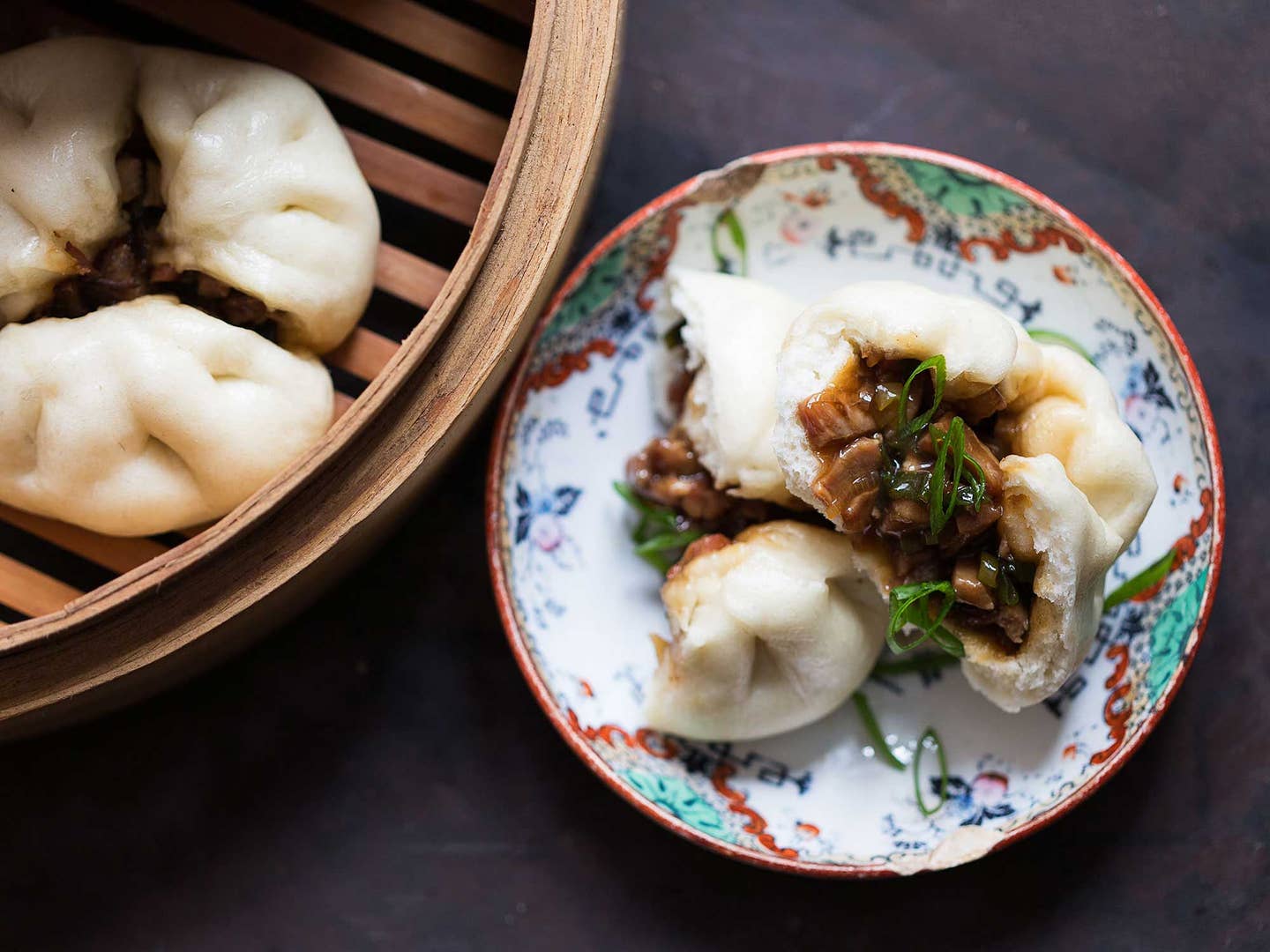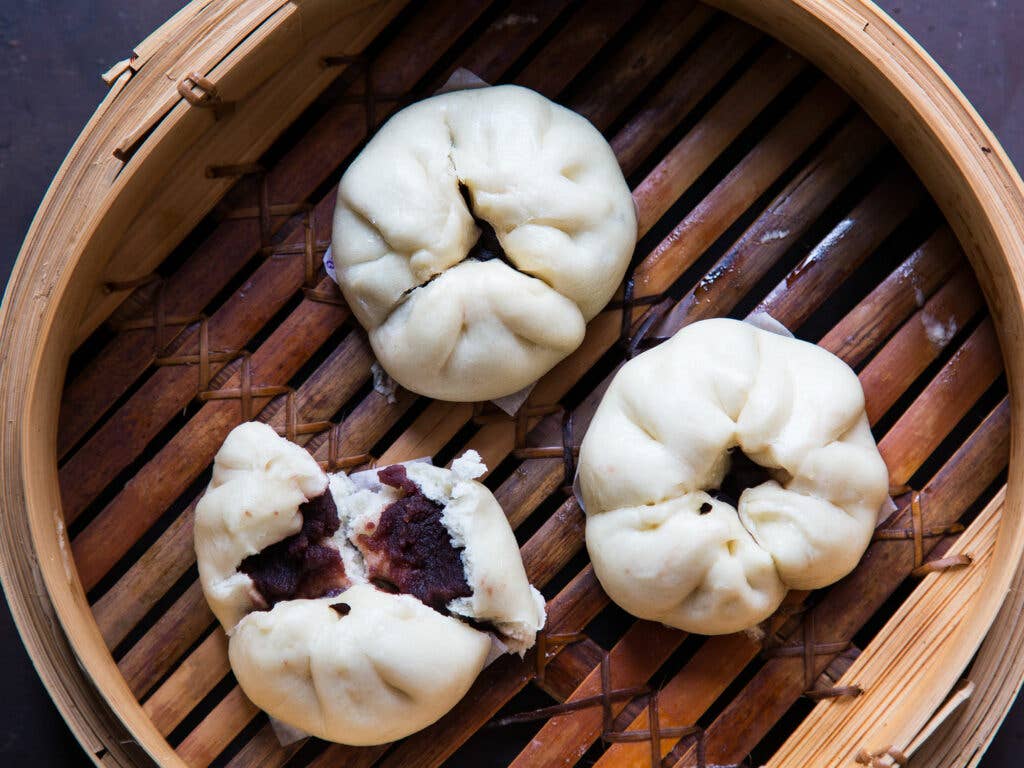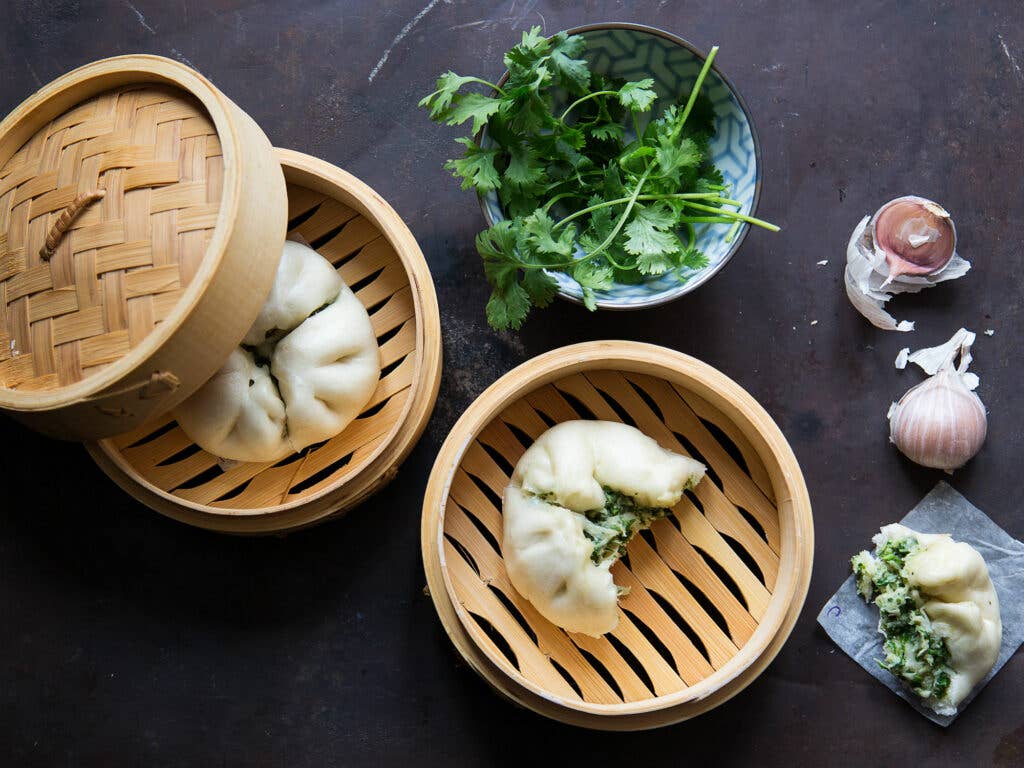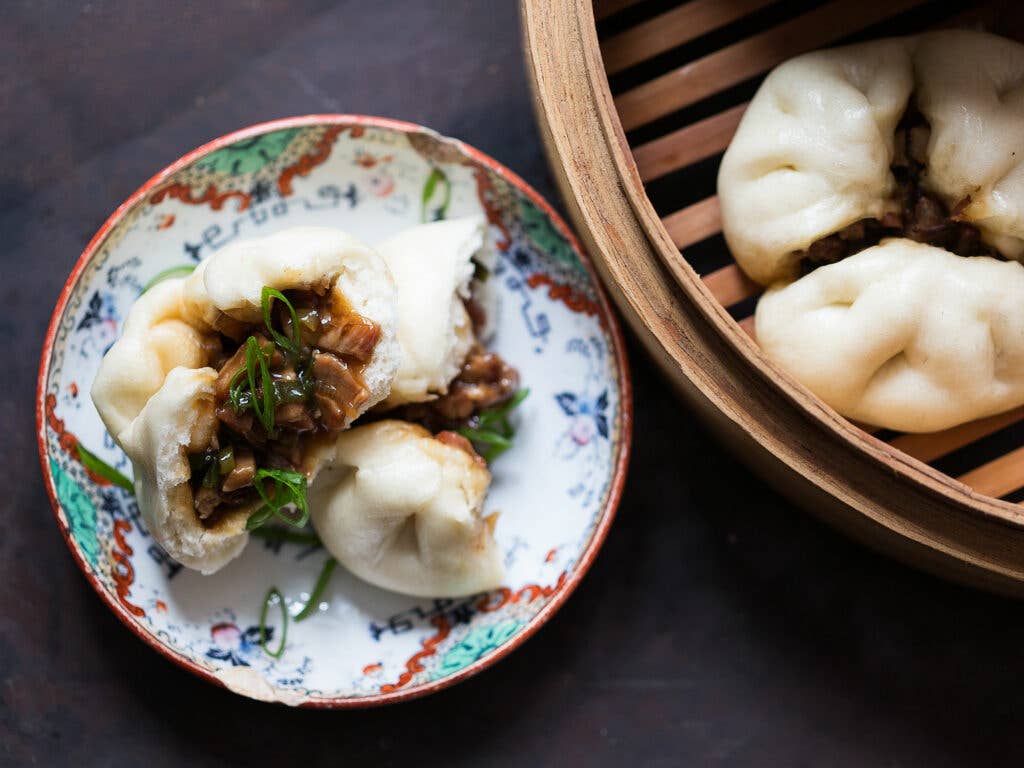
How to Conquer the Chinese Steamed Pork Bun
We’ve perfected char siu bao for the ultimate at-home recipe
At one point, back in the early aughts, a budget bus line from Boston's South Station would spit you out at the foot of the Manhattan bridge in about four hours. At just under $20 a ride, the Fung Wah was fast, cheap, and, as it turns out, only marginally concerned with passenger safety. It was, however, essential to any college student looking to shake off her prim, New England academic identity and dip her toes in New York's all-too-real nightlife.
Starting these adventures in the heart of Chinatown was a convenient excuse to soothe a rumbling traveler’s belly (and prepare for an evening of questionable decisions) in the neighborhood’s dim sum shops and bakeries. Stocked with egg custard tarts, Chinese sausage rolls, rice balls, and slices of spongy yellow cake, all at startlingly low prices, these shops seemed a world apart from lackluster Bostonian Chinese restaurants. None of their treats were ever quite so comforting as the steamed pork buns.
Typically a breakfast item, char siu bao were—and thankfully still are—available all day from shops all over New York City’s Chinese neighborhoods. Either steamed or baked, the pillowy rolls are most often filled with a mixture of roasted pork, scallion, and thick soy-based barbecue sauce.
Most bakeries use the same doughs for a range of fillings, from hard boiled and egg and sausage to sweet pumpkin purée. While the baked version travels and reheats well, its steamed cousin is always the star of the dim sum cart. At its best, the bread is tender and yielding, fluffy as chiffon cake and filled with salty-sweet, fatty pork. But at its worst, it is a gummy, flavorless paste filled with cornstarch goop, gristly trimmings, and red food dye.
We at the SAVEUR Test Kitchen set out to to develop the former, using ingredients you can readily find at home. Chinese bakeries have a few tricks up their sleeves—steam-injection ovens for ideal steaming; extremely low-protein, highly bleached flours for tender and delicate doughs—but the home workarounds are easy.
How to Nail Fluffy Dough

Steamed bun dough should be fluffy and delicate with a tight crumb and ever so slight chewiness. To achieve that texture, you need to mind your fat, flour, and leavening.
We found that our bao achieved optimal fluffiness when made with a solid fat like lard or shortening; the former adds a complementary mellow porky flavor. We also settled on using a mix of yeast and baking powder.
To cheat the low-protein flours used in Chinese bakeries, we cut all-purpose flour with a small percentage of cornstarch. And to get the most aeration out of our dough, we sent it through a long vigorous mix in a stand mixer outfitted with a dough hook. Not only does this heavy-duty mixing add air, but it also generates heat, creating a small, even crumb structure and while speeding up the rising process.
Fixing the Filling

While most Chinese bakeries make good bao dough, the filling is more of a wild card. Some char siu is far too fatty; others too lean. It’s also frequently sweet—cloyingly so—and lacking in the porky heft we want.
Admittedly, we cheated a little, using boneless barbecued spare ribs from a local Chinese butcher. But considering the other ingredients that go into this filling, you can use most any mildly spiced roast pork recipe to get the pork you need, such as this crispy Chinese pork belly. From there we add coarsely chopped scallion greens and whites and just enough soy and oyster sauce to keep the whole thing juicy without getting too sweet. A cornstarch slurry adds some body to the filling without turning it into gloop.
Our standard barbequed pork filling is delicious and reliable, but don't be afraid to experiment with others. Prepared sweet red bean paste (like the Japanese brand Shirakiku)needs no adulteration. We also fun filling steamed buns with our leftovers (takeout mapo tofu was a delicious, though messy flavor). But our favorite spin was a mix of crab, cilantro, and ginger. Toss 1 pound of cooked crab meat with ¼ cup of freshly grated ginger, 3 cloves of minced garlic, 1 ⅓ cup chopped cilantro, 1 tablespoons of canola oil and salt and fresh lemon juice to taste.
Stacking Them Up

We also wanted to improve on the char siu bao’s proportions. Too often we buy buns with an excess of dough and only a little filling; we want our buns stuffed with roast pork. So when rolling out the dough, thin the edges out as much as possible and leave the center of the circle a bit thicker; this will minimize the likelihood of your buns having barely-there bottom layers and thick, doughy top knots.
Snipping the tops of the bao just before cooking allows the knotted closure to split and expand, and gives the buns their signature three-pointed shape. Before you put the bao in the steamer, let it heat up above the simmering water first. Pre-heating the steamer and misting your bao with cool water before cooking will increase your fluff factor.
And for a final touch: New York-based pastry chef Pichet Ong suggests perfuming your steaming water with a bit of ginger and lemongrass: a nice touch that gives a bit of drama to the act of serving the bao right off the stove. While not a completely necessary flourish, we’ll take a cloud of romance with our breakfast (or midnight snack) any time.

Keep Reading
Continue to Next Story










